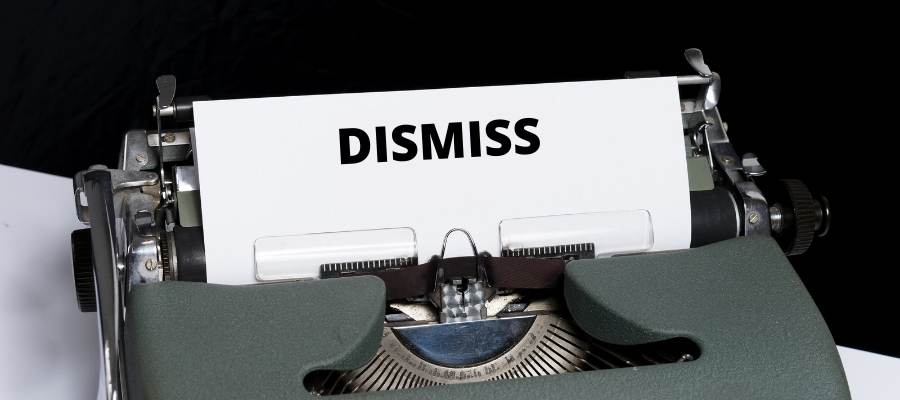Recently, I received an email from the Speech Coordinator of a large school district in Texas. She asked about the criteria for dismissal from speech therapy at my former school district. Here’s the thing–we spend a great deal of time talking about eligibility, and we need to devote equal time to dismissal criteria.
Let’s start with the legal jargon and the big scary words that lead to the equally scary sounding designation – Termination of Services. We won’t spend a lot of time here for two reasons:
- Your specific group or district has their own set of rules.
- They help us get the paperwork and process right, but they don’t necessarily help us navigate the sticky and often personal decision to dismiss a child from services. That being said, here is a summary of what most districts ask us to consider:
Typical Exit Criteria for Speech
- Duration of Services
- Intensity of Service
- Mode of Service
- Review of Evaluation Data
- Focus of Service
- Change of Setting
- Individual Needs
- Pattern of Service Delivery
- Capacity of Student for Change
When Speech Therapy Is Not Working
The thing I love about a list of speech exit criteria it is a menu of options for me to try when I am not getting the results that I want in speech therapy. Maybe I am not meeting often enough? Maybe too often? Maybe too long? Maybe she shouldn’t be in a group? Either way, it is a win-win for us.
By using exit criteria we can sometimes break free of mediocre results and get our speech students moving again. Or, we have a justifiable list of everything we considered before moving towards dismissal.
I would say that dismissing students is normally really straight forward when we continue to focus on two specific objectives:
- Do they qualify based on our testing?
- Is there educational need?
Did they meet their goals?”
Yes, a child can be dismissed if they meet their goals. This is totally appropriate and saves everyone a lot of time if EVERYONE is immediately in agreement. “Did they meet their goals?” is a little murkier when we aren’t all on the same page because it opens a pandora’s box of new questions:
Do they need new goals?
Were the goals appropriate?
How do they compare to their peers?
In this case we need to re-evaluate. It is the only way to do right by the student and make sure we are making the correct decision.
Speech Summary and Recommendations Text
When a dismissal is in question, it is important that we spell things out in the report but we don’t want to come across as being defensive or over explaining the facts. Use the IEP meeting for the debate and just tell it like it is. Your writing should be firm but simply straight to the point. Here is an example of some text for you to use:
Joe, an 8-year-old third grader at NAME Elementary School, was referred for testing to obtain current speech and language information. This evaluation gave information regarding continued eligibility for special education services under the educational classification code of Speech Impairment.
This evaluation is considered a valid representation of Joe ’s current levels of functioning in the areas assessed. The purpose of this report is to identify the presence or absence of speech and language disorder and provide information regarding Joe’s needs within the educational setting.
At this time, Joe does not meet educational eligibility criteria under the code of Speech Impairment (SI) in the area of articulation/fluency/social/pragmatic language disorder. In order to qualify for educationally-based speech therapy, Joe must meet the following three areas of criteria eligibility:
Criteria #1: Joe presents with a speech and language disorder.
Currently, testing indicates that Joe’s communication is within normal limits.
Criteria #2: Joe demonstrates an educational need for speech therapy in an educational setting.
Joe’s current level of communication does not negatively impact his academic abilities.
Criteria #3: Joe presents with deficits that can only be address by a licensed speech-language pathologist.
Joe’s communication is a relative asset. Joe will benefit from remaining in the classroom full time to access his teacher and other curriculum specialists.
Discontinuing Speech Therapy when it’s Not Black and White

If you have read this far then you know that not every call is easy to make. Even if it IS obvious that a child shouldn’t receive speech services or if a child hates speech therapy, what do you do if:
- The principal does not want a dismissal from speech therapy
- The teacher does not want a dismissal from speech therapy
- The parent does not want a dismissal from speech therapy
- All of the above!
Exiting a student from speech therapy can be incredibly difficult when you are the only one who thinks it’s appropriate. Speaking honestly, we are only one voice on the child’s team and some situations require a little time for everyone involved to get used to the idea that their student won’t be working with you anymore.

I have found that there are some simple strategies to warm everyone up to the idea and take baby steps to move toward dismissal from speech therapy. Also, and this is a big ALSO, this gives you some room to be wrong. We are human too and maybe the child will still benefit from speech therapy. Starting the process of separation will either let everyone know he is okay or show if he begins to struggle again and needs to return to services. Here are some suggestions to get the ball rolling:
Taking a Break from Speech Therapy

We can have an IEP meeting and decide to push the pause button. This does mean that you will have to have an extra meeting to change the schedule, but you will more than make that time up by not providing the services. This is very effective with middle schoolers when your student is very verbal about not wanting to see you.
Best Practices: If you are going to suggest this in a meeting, 1) immediately identify the time frame and 2) immediately schedule the next meeting.
Today is January 15th. What I am suggesting is that we give it 90 days and revisit this in March. At that time I would love to hear how he is doing with communication in the classroom and if his grades are negatively impacted. Does everyone have March 28th at 10AM available?
Using Consultations Services Instead of Speech Therapy
Consultation services are a good step-down measure that can make the team feel more comfortable. Parents, teachers, and principals do not feel that “speech services are being taken away” and a child can transition back to life without speech therapy. Simply change the services and meet with the teachers during the allotted time.
I have seen consultation services done well and also done poorly. When done well, time is scheduled with the teacher, even 15 minutes/month, and an in depth conversation is had about the student. Then, parents are given a follow-up call or note. When done poorly, the student is immediately off the SLP’s radar, no consultation happens, their reputation is damaged, and they will never get a school to agree to consultation again.
One Last Tip for Dismissals
Half the battle we face when dismissing students is getting everyone to agree to the dismissal when we know professionally that it is appropriate.
When dismissal attempts go badly, it is often because teachers, parents, or principals think that the student is being denied something. You can reduce these fears by removing this from your vocabulary:
…child is being removed from speech therapy / stopping speech therapy
And add this:
…child is being returned to the classroom full time.
Yes, Ms. Johnson. Thank you for sharing Ernie’s progress. I know you are concerned about his writing and math too. The good news is that after today I won’t be pulling him so he will be in the classroom full time again and will have more time to focus on this.





Thank you for this! I am forwarding it to my colleagues who have a difficult time with dismissing students.
Awesome! You’re welcome. I go home feeling great every time I return a student to gen ed full time.
Scott